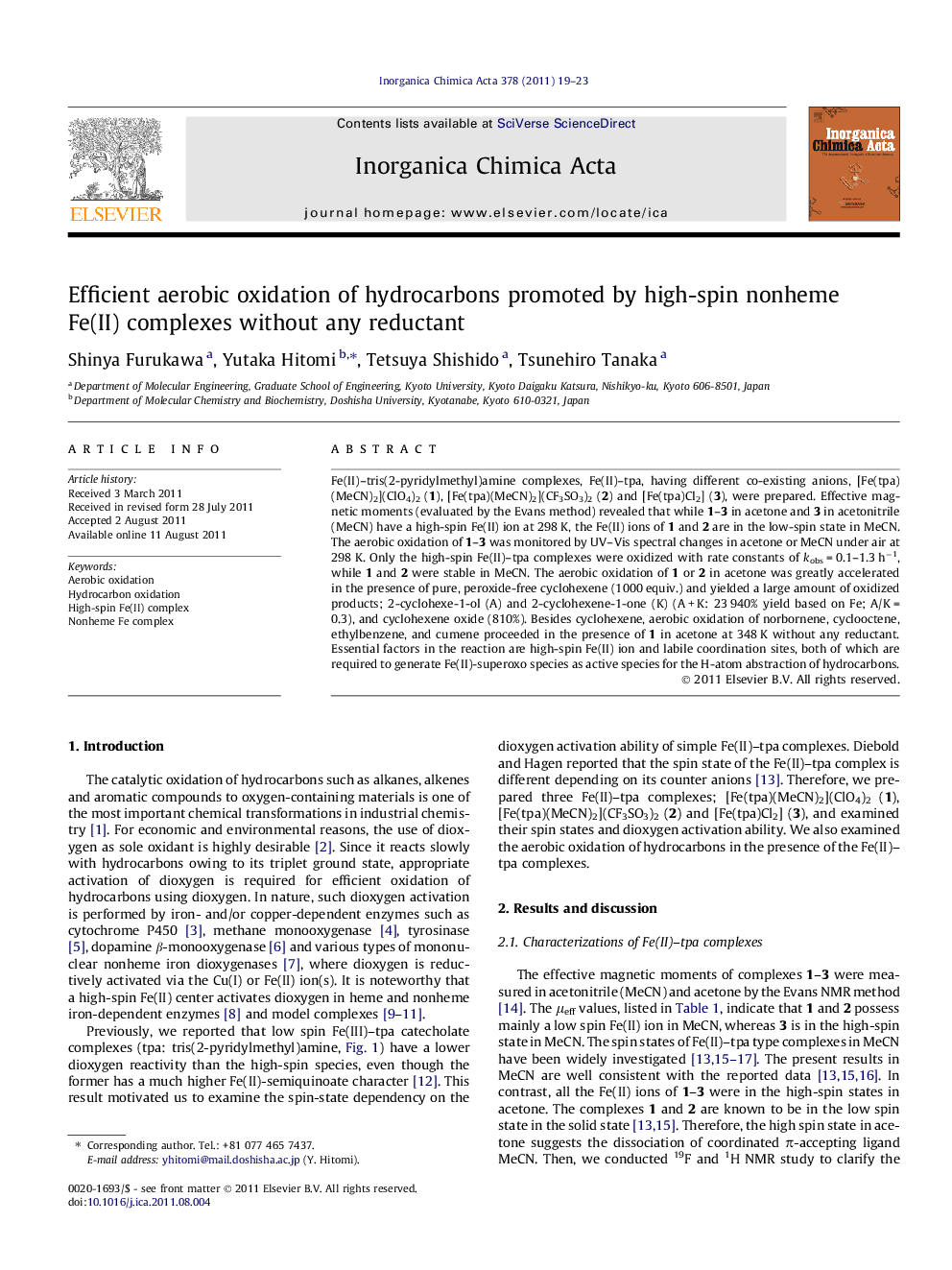| کد مقاله | کد نشریه | سال انتشار | مقاله انگلیسی | نسخه تمام متن |
|---|---|---|---|---|
| 1307503 | 975144 | 2011 | 5 صفحه PDF | دانلود رایگان |

Fe(II)–tris(2-pyridylmethyl)amine complexes, Fe(II)–tpa, having different co-existing anions, [Fe(tpa)(MeCN)2](ClO4)2 (1), [Fe(tpa)(MeCN)2](CF3SO3)2 (2) and [Fe(tpa)Cl2] (3), were prepared. Effective magnetic moments (evaluated by the Evans method) revealed that while 1–3 in acetone and 3 in acetonitrile (MeCN) have a high-spin Fe(II) ion at 298 K, the Fe(II) ions of 1 and 2 are in the low-spin state in MeCN. The aerobic oxidation of 1–3 was monitored by UV–Vis spectral changes in acetone or MeCN under air at 298 K. Only the high-spin Fe(II)–tpa complexes were oxidized with rate constants of kobs = 0.1–1.3 h−1, while 1 and 2 were stable in MeCN. The aerobic oxidation of 1 or 2 in acetone was greatly accelerated in the presence of pure, peroxide-free cyclohexene (1000 equiv.) and yielded a large amount of oxidized products; 2-cyclohexe-1-ol (A) and 2-cyclohexene-1-one (K) (A + K: 23 940% yield based on Fe; A/K = 0.3), and cyclohexene oxide (810%). Besides cyclohexene, aerobic oxidation of norbornene, cyclooctene, ethylbenzene, and cumene proceeded in the presence of 1 in acetone at 348 K without any reductant. Essential factors in the reaction are high-spin Fe(II) ion and labile coordination sites, both of which are required to generate Fe(II)-superoxo species as active species for the H-atom abstraction of hydrocarbons.
Aerobic oxidation of alkenes was promoted efficiently by a high-spin Fe(II) complex supported by tris(2-pyridylmethyl)amine in acetone without any reductant. The reactions proceed presumably through hydrogen atom abstraction by an Fe(III)-superoxo species.Figure optionsDownload as PowerPoint slideHighlights
► Aerobic hydrocarbon oxidation without reductants.
► Dioxygen activation by high-spin Fe(II) complex.
► H-atom abstraction by Fe(III)-superoxide species.
Journal: Inorganica Chimica Acta - Volume 378, Issue 1, 30 November 2011, Pages 19–23